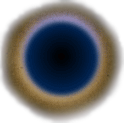There are many views on the nature of time – a key ingredient of any moving image work! For example, the editing process of most narrative films compresses time into relevant sections that unfold a story taking place within a longer time period than the viewer sits through. I have tended to make and perform works that are records of a “real-time” that unfolds in the same duration as the viewer perceives.
Science, somewhat unhelpfully, currently describes a space/time continuum originating in a singularity or “big bang” many billions of years ago. I did pay homage to this view in Merging-Emerging back in 1979, but it hasn’t otherwise helped much unless one is actually engaging with that view as the subject of a video!
More relevant here is that most people’s common-sense appreciation of time tends to fall into two variants – firstly that times passes in one-linear direction from the past through the present to the future, and that we are all bound by a beginning and end to our own subjective experience of conscious life; most people agree that that is bounded by birth and death respectively, but there are many other variants on this particular point . . .
The other view is that time is cyclical – that something repeats either in the cosmos itself or in our experience of it. The most obvious example of this is the cycle of the seasons that we are still very much bound within. The ancient Indian view is that there are great cycles of cosmic time called Yugas, and that individual lives are in some sense repeated through re-incarnation. These views has a lot of imaginary power in contextualising our lives and experience within a greater whole than our own narrow perspective and experience – and it should be realised that they represent a metaphysical context rather than a specifically religious one.
I have tried to combine both these apparently contrasting views within my own practice. The first view of linearity is to share the “natural” linear unfolding of time with the viewer by performing or recording in their “real-time” experience. Then to challenge them to sense themselves outside linear time by evoking the second cyclical view of time through a more formal technique of tending to begin and end most pieces at the same or very similar point.
For me, the moving image works I make are primarily enquiries into the nature of consciousness explored by suggesting/sharing/evoking thematic “processes” in the natural world or in our internal experience. Traditional static artworks have tended to deal with objects or event/experience “summaries” evoked by the static form, whereas works that extend in time have greater possibilities to explore the unfolding and changing of thoughts, experiences, emotions or events. Having an externally defined “process” as a focal point greatly assists in creating a collaborative piece of work when working with others, as it allows a common structure to perform from through time. My own particular main interest (in the context of this article) has been in the comparison and similarity between music (without words) and video – they both seem to me to be abstract languages that satisfy us in some quite complex ways. I have used music and its structural unfolding in time as both a basis and collaborative partner in (most of) my video works.
